Содержание
- 2. TOPIC 2 TITLE OF ACADEMIC ARTICLE
- 3. BEGINNING OF ACADEMIC ARTICLE Pathways for Germany’s Low-Carbon Energy Transformation Towards 2050 Hans-Karl Bartholdsen, Anna Eidens,
- 4. FUNCTIONS OF ARTICLE TITLES To present your research concisely To describe article content in different degrees
- 5. TYPES OF TITLES FUNCTION: TO STIMULATE THE READER’S INTEREST 1. Titles that announce the general subject
- 6. TITLES WITH GENERAL SUBJECT Design of Magnetic Coupler for Wireless Power Transfer Interpretation of Quantum Mechanics
- 7. TITLES WITH FINDINGS Effect of the Iron Reduction Index on the Mechanical and Chemical Properties of
- 8. TITLES WITH SPECIFIC TOPIC Energy Use in Residential Buildings: Impact of Building Automation Control Systems on
- 9. TITLES WITH CONTROLLING QUESTION Biological Scaffolds for Abdominal Wall Repair: Future in Clinical Application? Waste Municipal
- 10. TITLES WITH THE ANSWER TO A QUESTION Smart Innovation Ecosystems Really Seeking to Meet Citizens’ Needs?
- 11. TITLES WITH METHODS Near-Field Immunity Test Method for Fast Radiated Immunity Test Debugging of Automotive Electronics
- 12. TITLES WITH THESIS Improved Capacity and Fairness of Massive Machine Type Communications in Millimetre Wave 5G
- 13. TITLES WITH GUIDELINES/COMPARISONS Ten Steps in Qualitative Modelling Pathways for Germany’s Low-Carbon Energy Transformation Towards 2050
- 14. TITLES WITH EFFECTIVE OPENINGS Press Start to Play: Classifying Multi-Robot Operators and Predicting Their Strategies through
- 15. TITLES WITH ALLITERATION Legal ease and ‘legalese’ Referees are not always right: the case of the
- 16. TITLES WITH PUN Now take the PIL (Patient Information Leaflet) CATSWoTS: Context Aware Trustworthy Social Web
- 17. TITLES WITH MYSTERY Outside the whale How to Select Balance Measures Sensitive to Parkinson’s Disease from
- 18. HOW TO CREATE A TITLE 1. Answer basic questions about your paper What is my paper
- 19. GRAMMAR IN TITLES • full-sentence constructions ‘Learning induces a CDC2-related protein kinase’; • nominal group constructions
- 20. TIPS FOR CREATING A TITLE Write a title after you have written your paper Include all
- 21. TASKS FOR INDIVIDUAL WORK Analyze the title of the article from your field of study that
- 23. Скачать презентацию



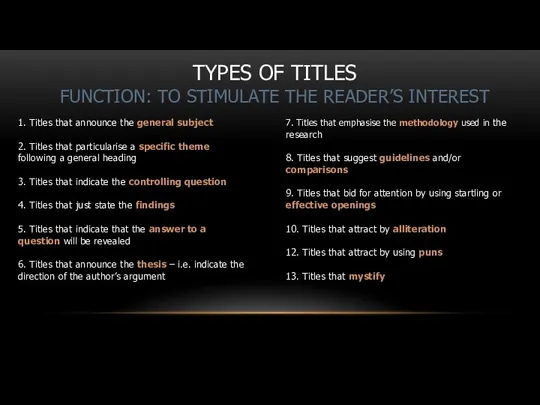
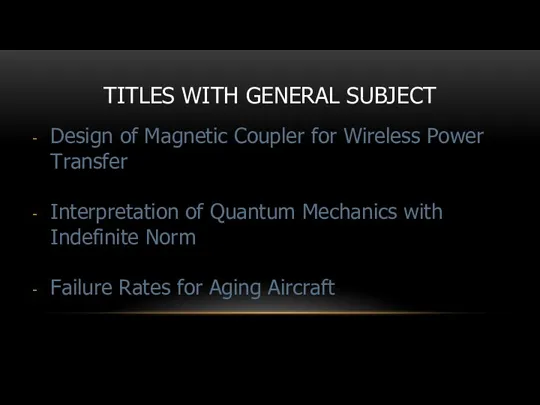
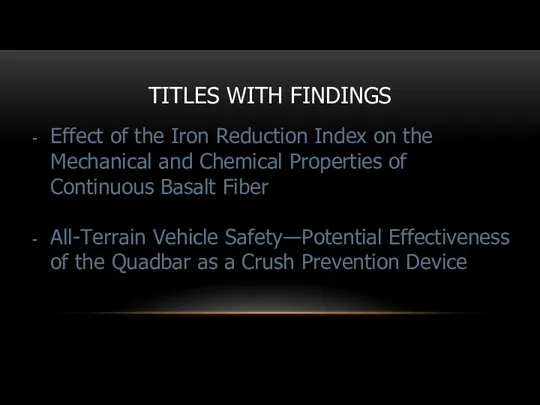
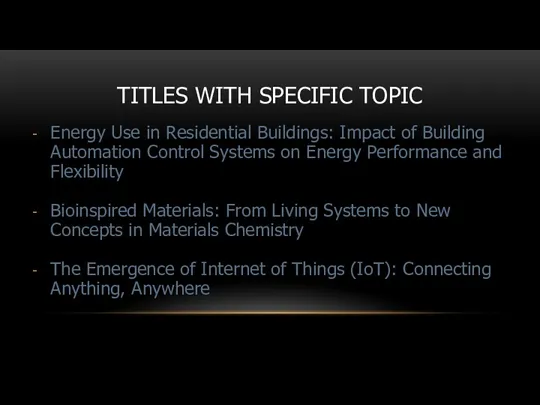
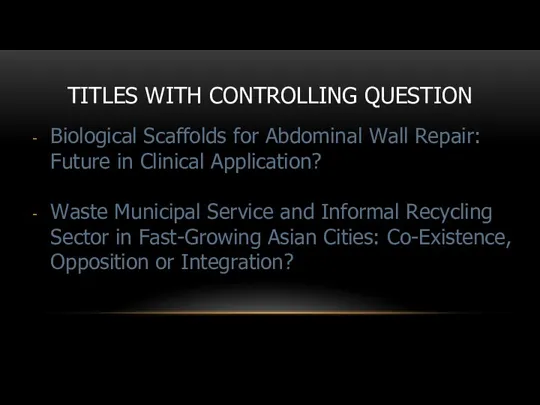
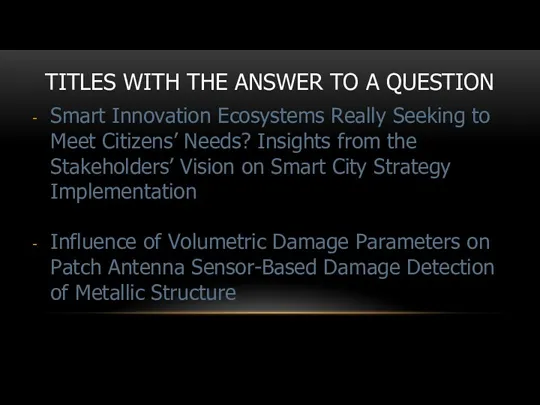
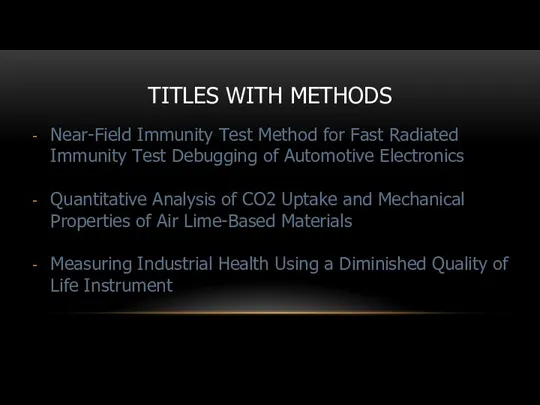
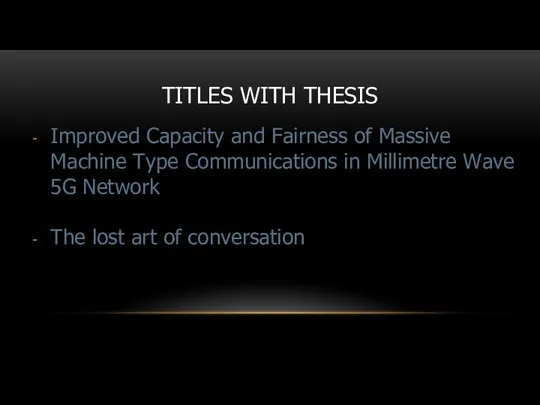

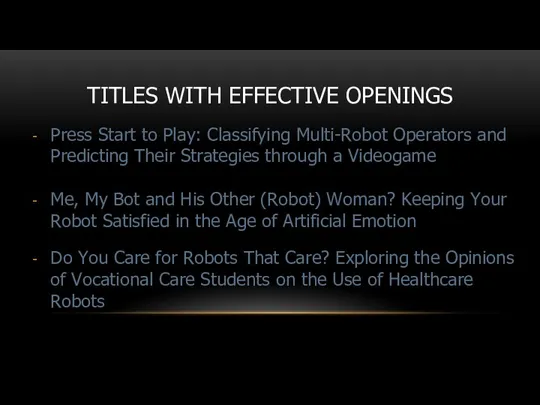

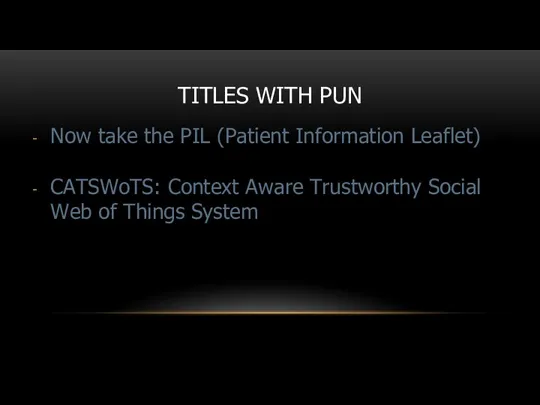
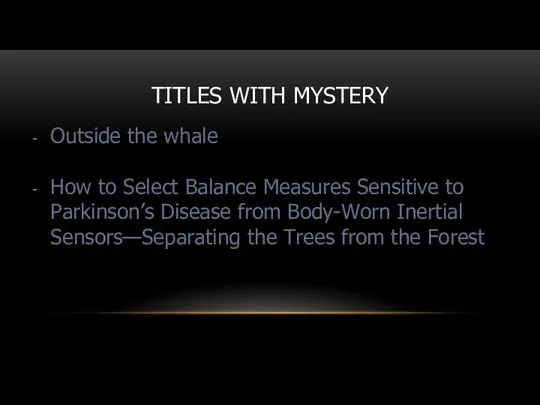
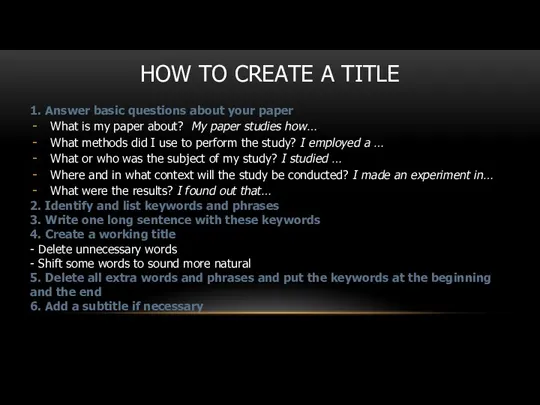
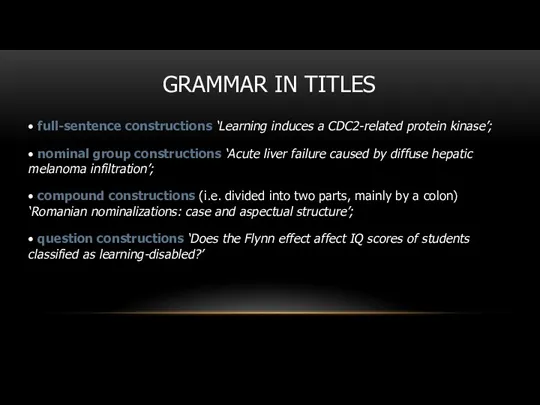
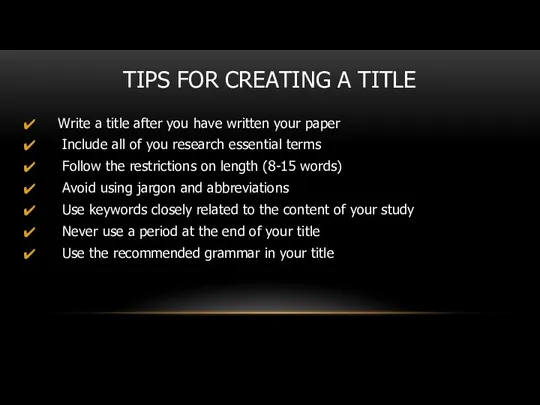
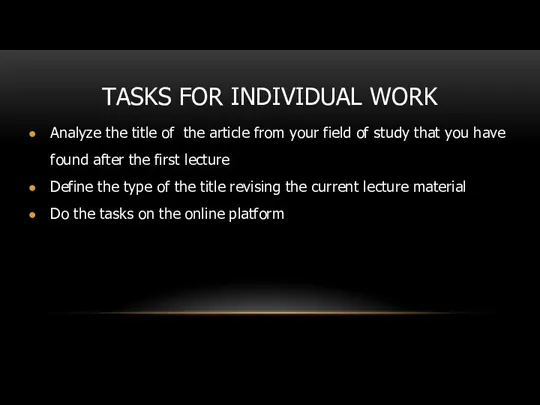
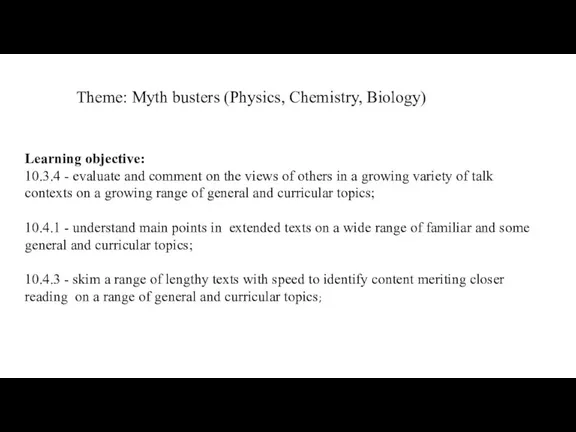 Theme: Myth busters (Physics, Chemistry, Biology)
Theme: Myth busters (Physics, Chemistry, Biology) Jeopardy. Grammar teacher switcher
Jeopardy. Grammar teacher switcher Environmental, threaten, pollution, concerned, recycling, proof, organization , production, helpful, global
Environmental, threaten, pollution, concerned, recycling, proof, organization , production, helpful, global The golden ring
The golden ring Существительные в единственном числе
Существительные в единственном числе Интерактивный тренажер Colors and Animals - 1
Интерактивный тренажер Colors and Animals - 1 Types of questions. Типы вопросов
Types of questions. Типы вопросов Family Matters
Family Matters Who wants to be a millionaire
Who wants to be a millionaire Money in man`s life
Money in man`s life The Environmental Protection
The Environmental Protection Приветствия и прощания
Приветствия и прощания Autonomy of local government in the Republic of Kazakhstan
Autonomy of local government in the Republic of Kazakhstan Colors
Colors Tag-questions (разделительные вопросы)
Tag-questions (разделительные вопросы) Who want to be a millioner
Who want to be a millioner Have got, has got
Have got, has got Оборот There is/there are
Оборот There is/there are Ethical perspectives and corporate social responsibility. Utilitarianism
Ethical perspectives and corporate social responsibility. Utilitarianism Peculiarities of Kazakh and English sound systems
Peculiarities of Kazakh and English sound systems Pudding
Pudding Canadian english (Mainland)
Canadian english (Mainland) The national symbols of Russia
The national symbols of Russia Semasiology
Semasiology Where were you born?
Where were you born? Past simple tense
Past simple tense Siege of Leningrad
Siege of Leningrad Cambridge Exams
Cambridge Exams